Lions
There are many resident lion prides in the Maasai Mara that occupy the same territory for several generations, often lasting many decades. Female offspring provide continuity and are the permanent members of the group. The adult males tend to be more transient and will gain their hierarchical positions by chasing out their predecessors. Nighttime in the Maasai Mara is filled with the deep roaring males, warning other males to stay away from their territory. The lion does not always live up to its reputation as the king of hunters, and is an inveterate scavenger always on the lookout for other predators' kills. Hunting is usually initiated by the females of the pride, in the early morning, late afternoon and even at night. They stalk cautiously to within a few paces of the animal, make a fast dash and pull the victim down. The prey is killed either by a bite through the neck or by clamping down on the muzzle until it suffocates.
Even though there is no apparent communication between the lionesses, it is common in the Maasai Mara to see several females hunt together with military precision; diversions, pincer movements and a final assault carried out with an incredible accuracy.
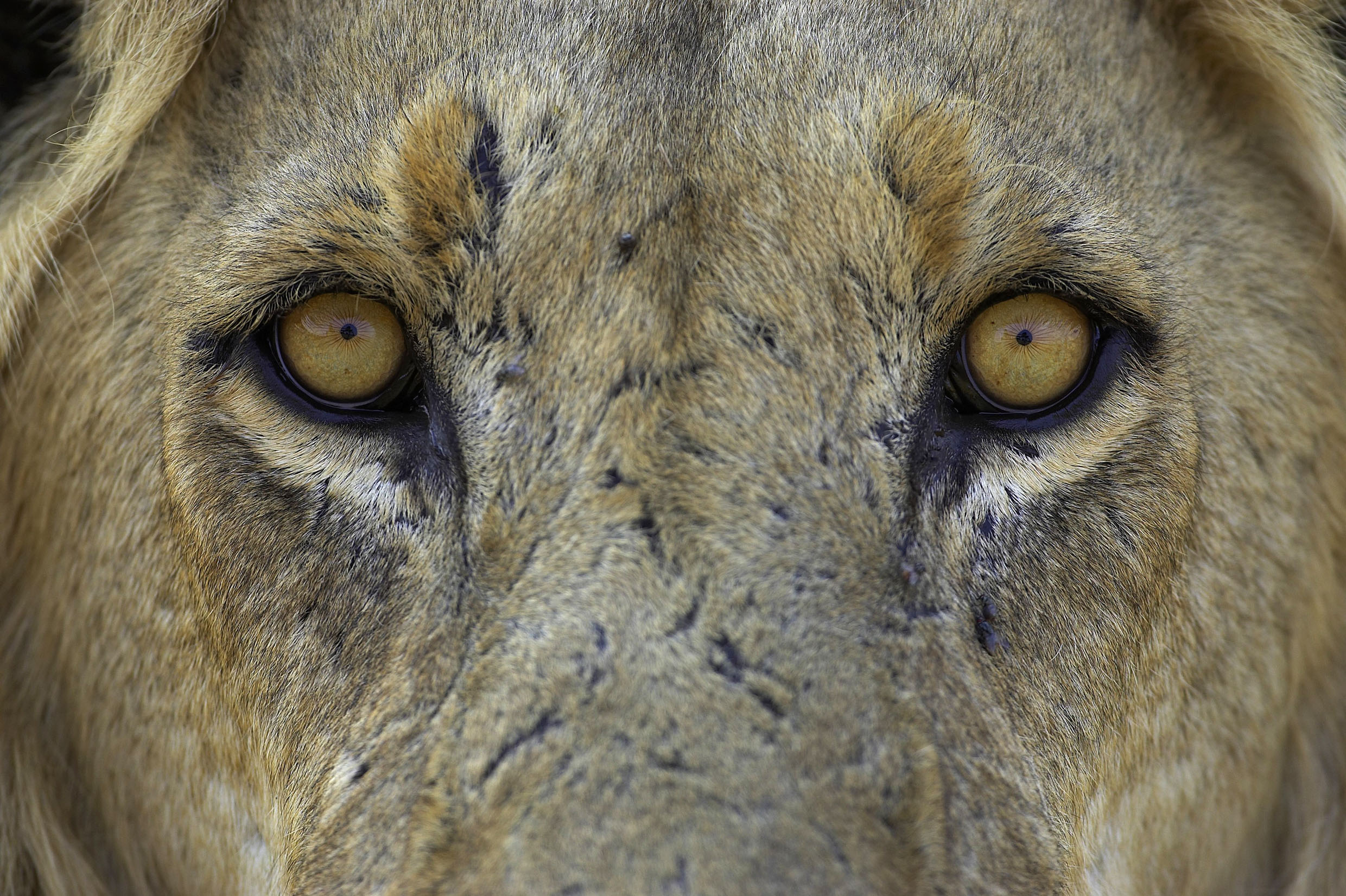
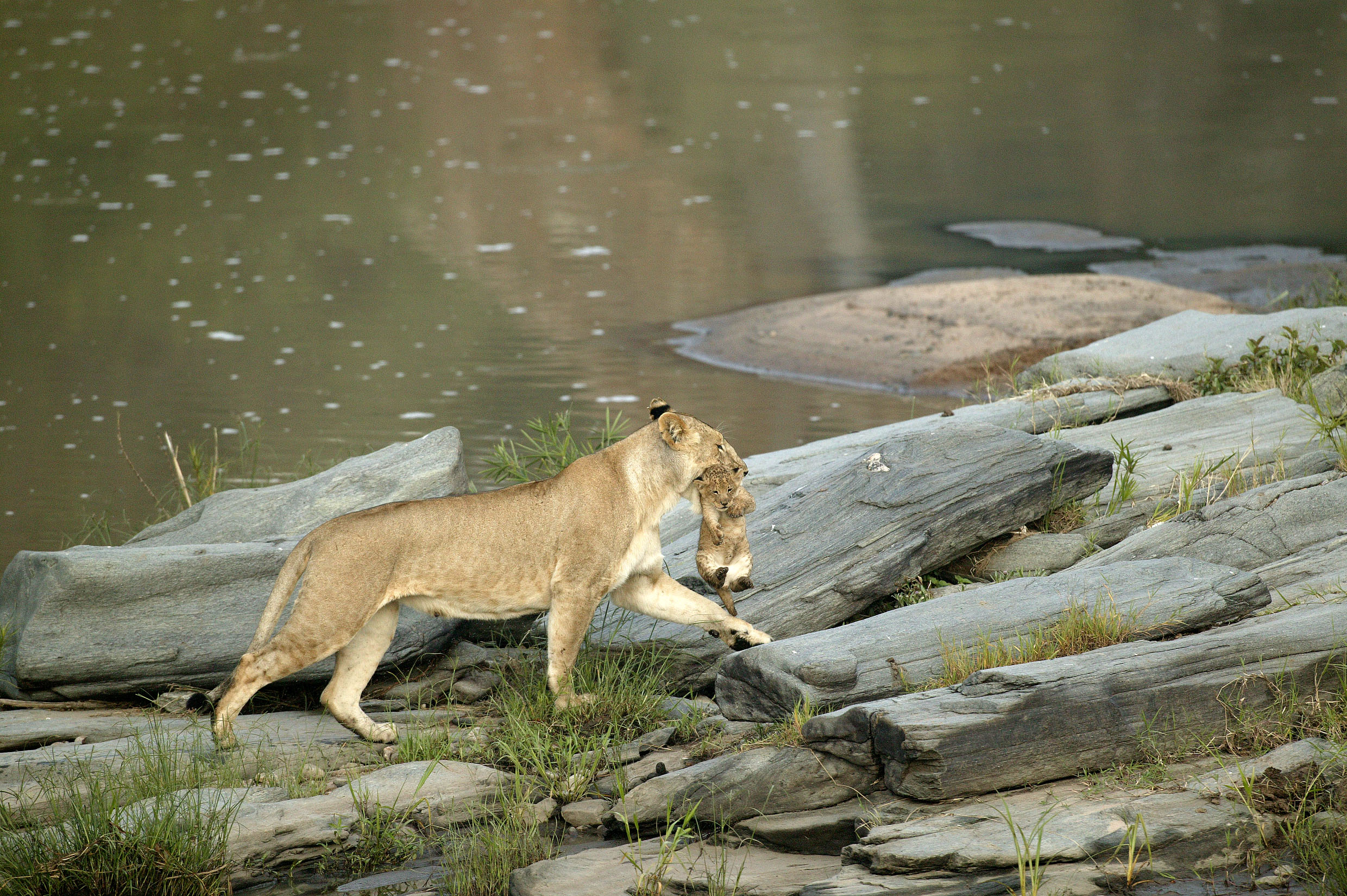


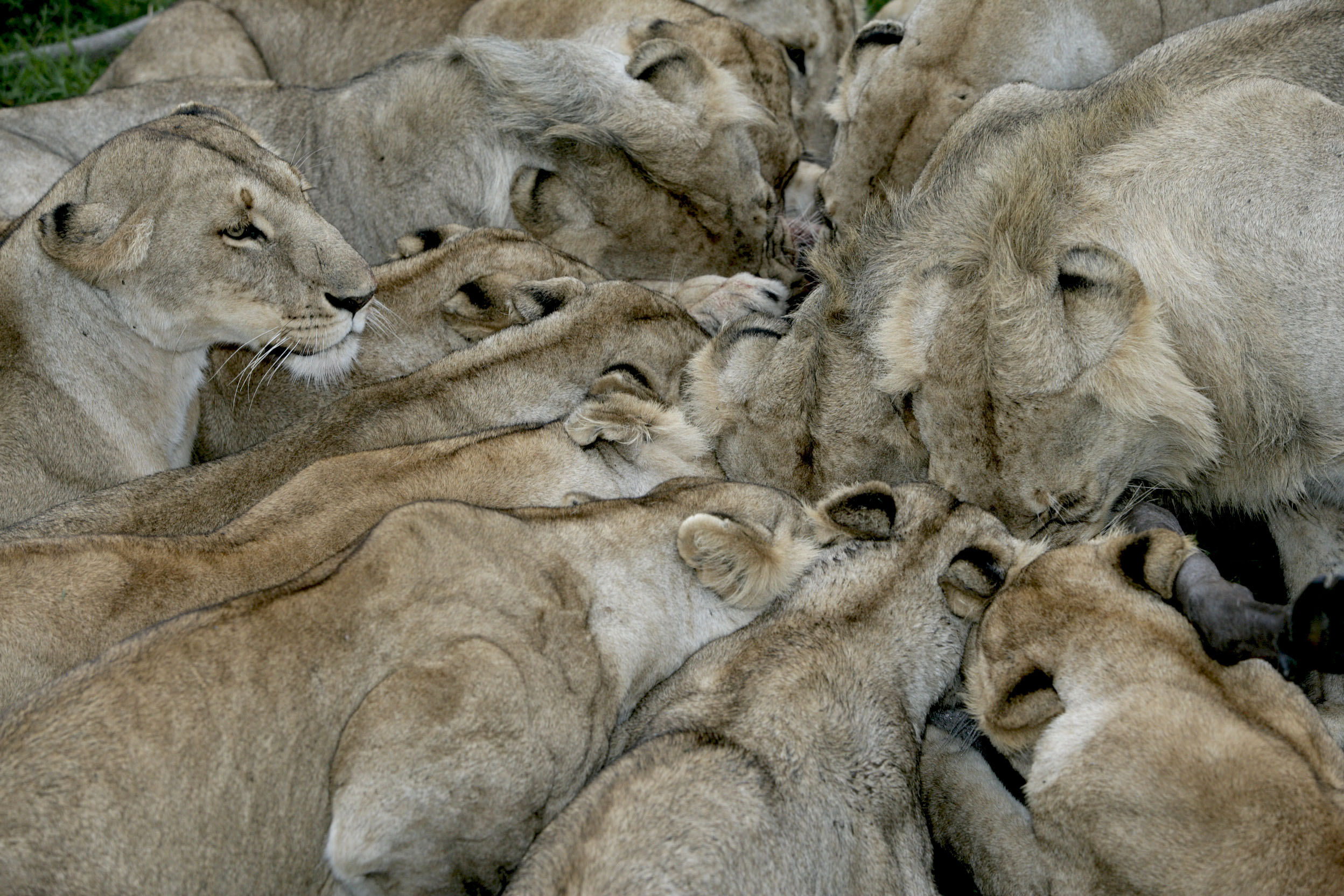
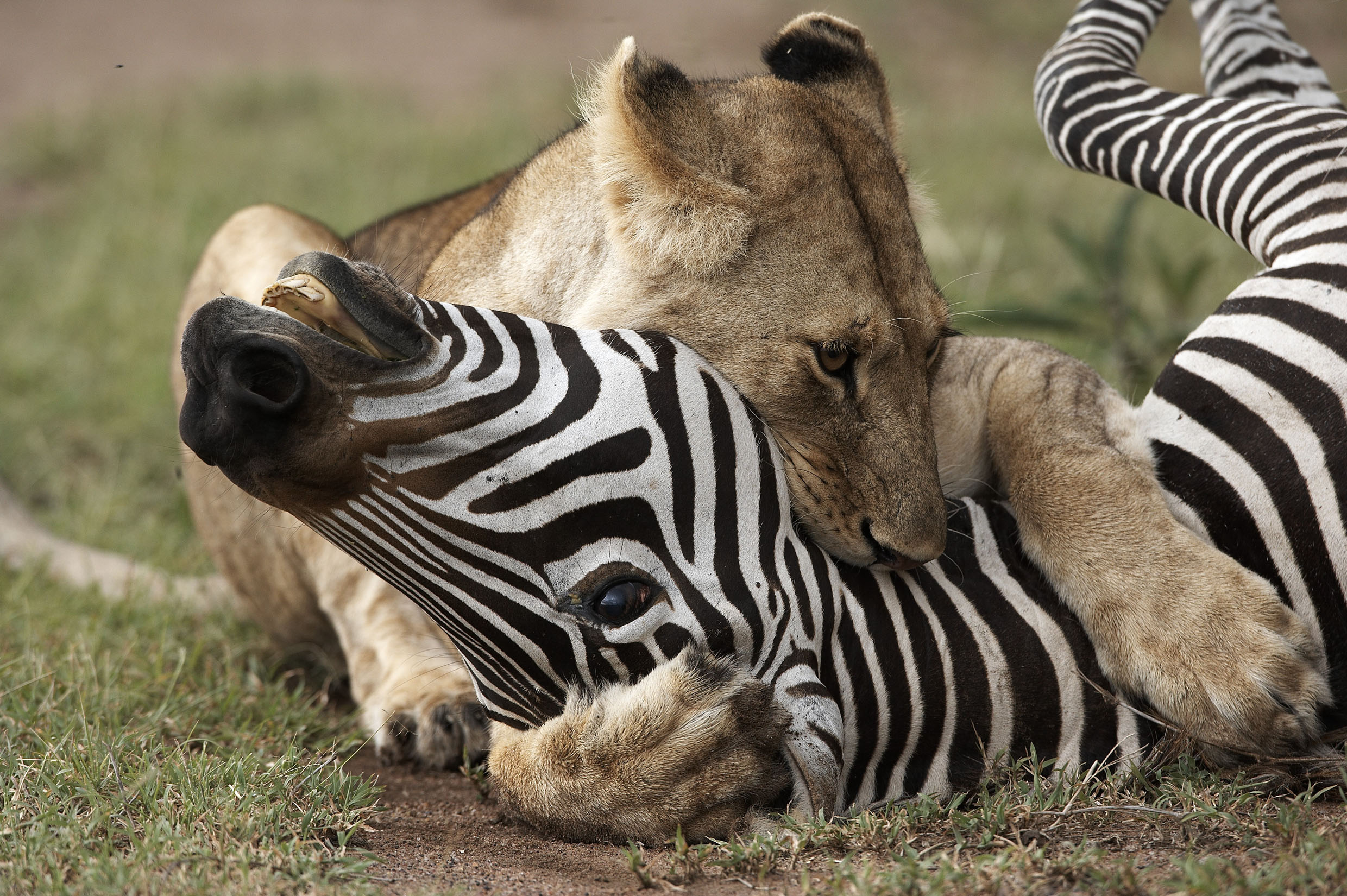
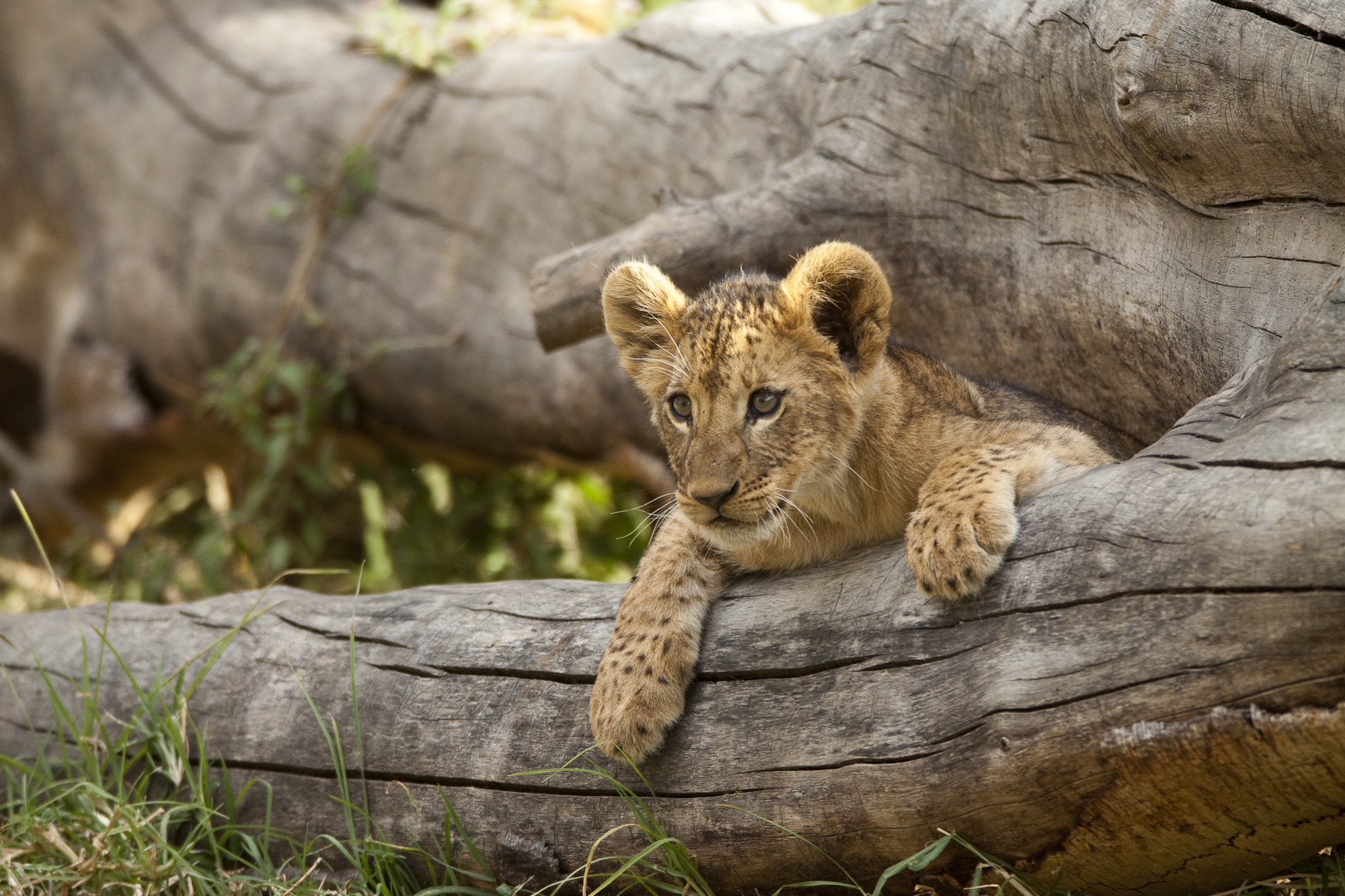
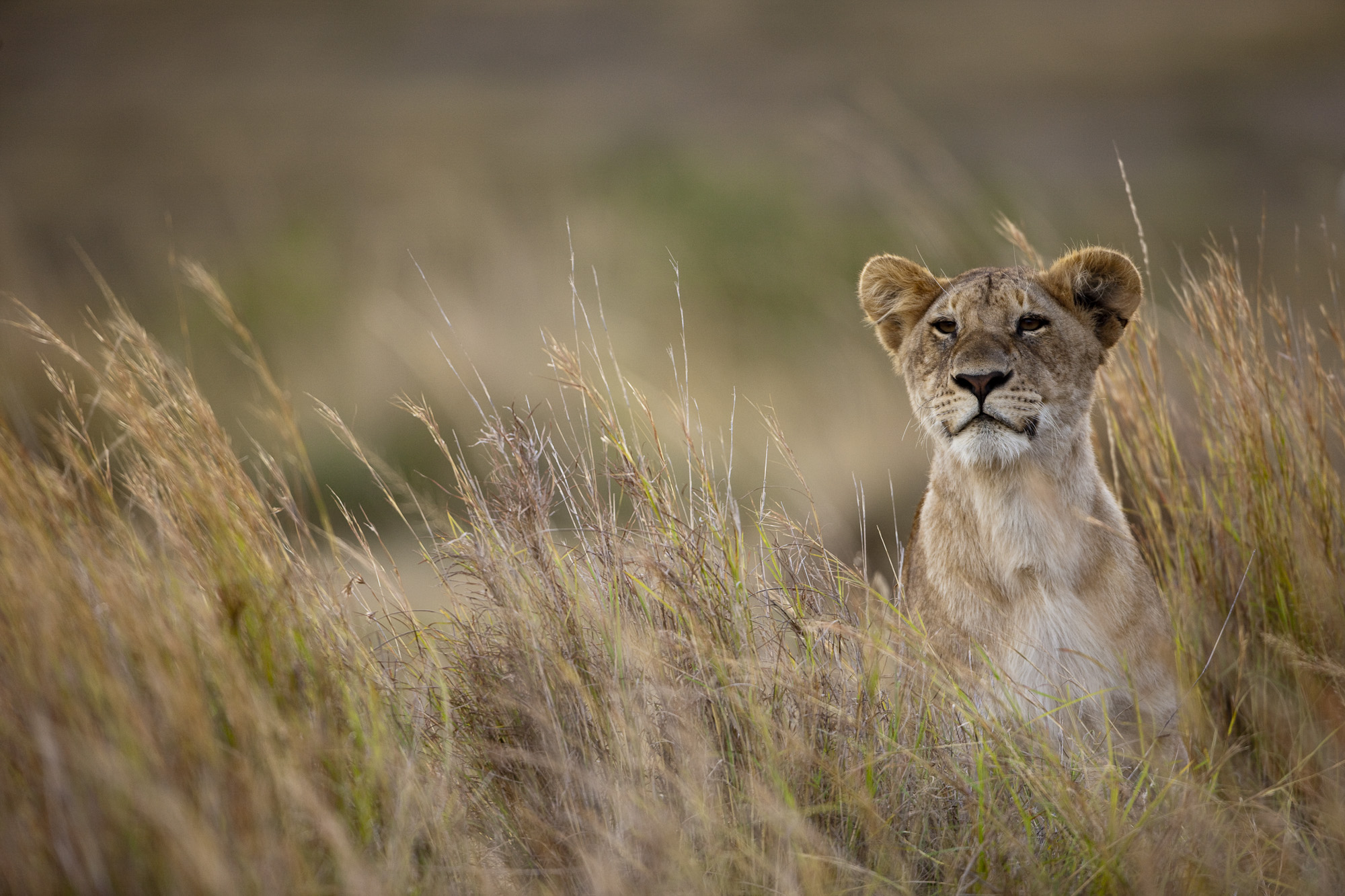
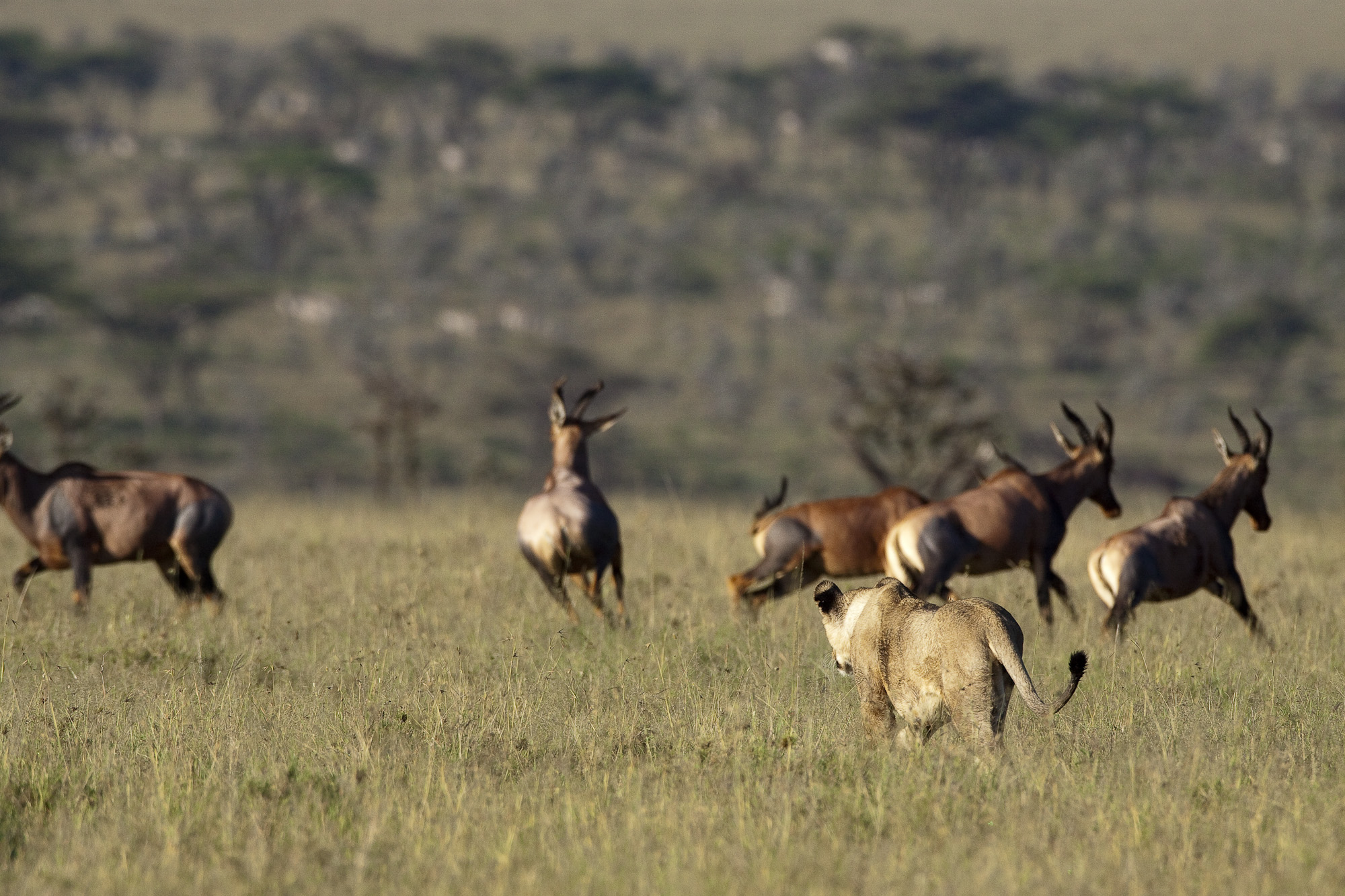
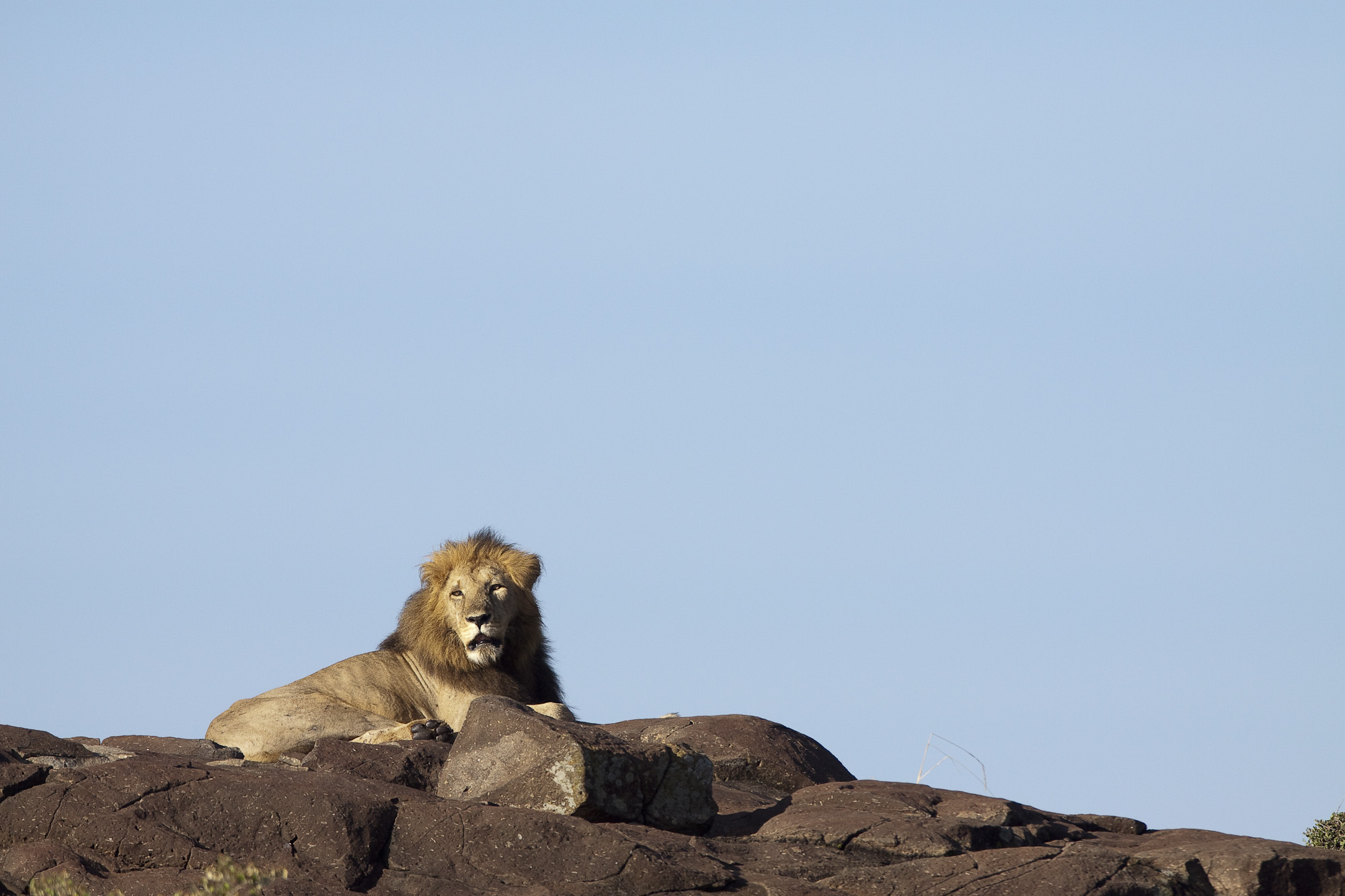
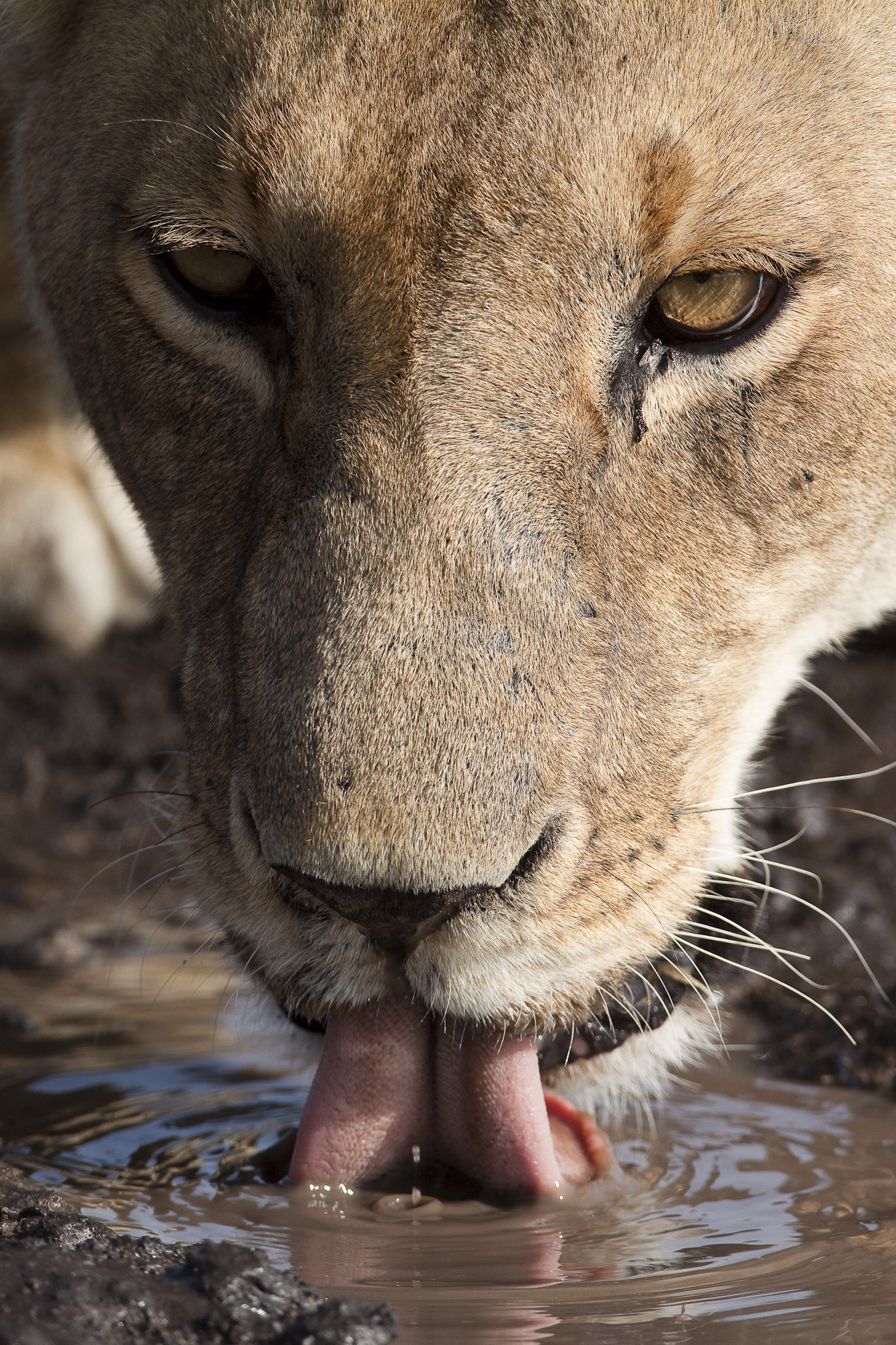
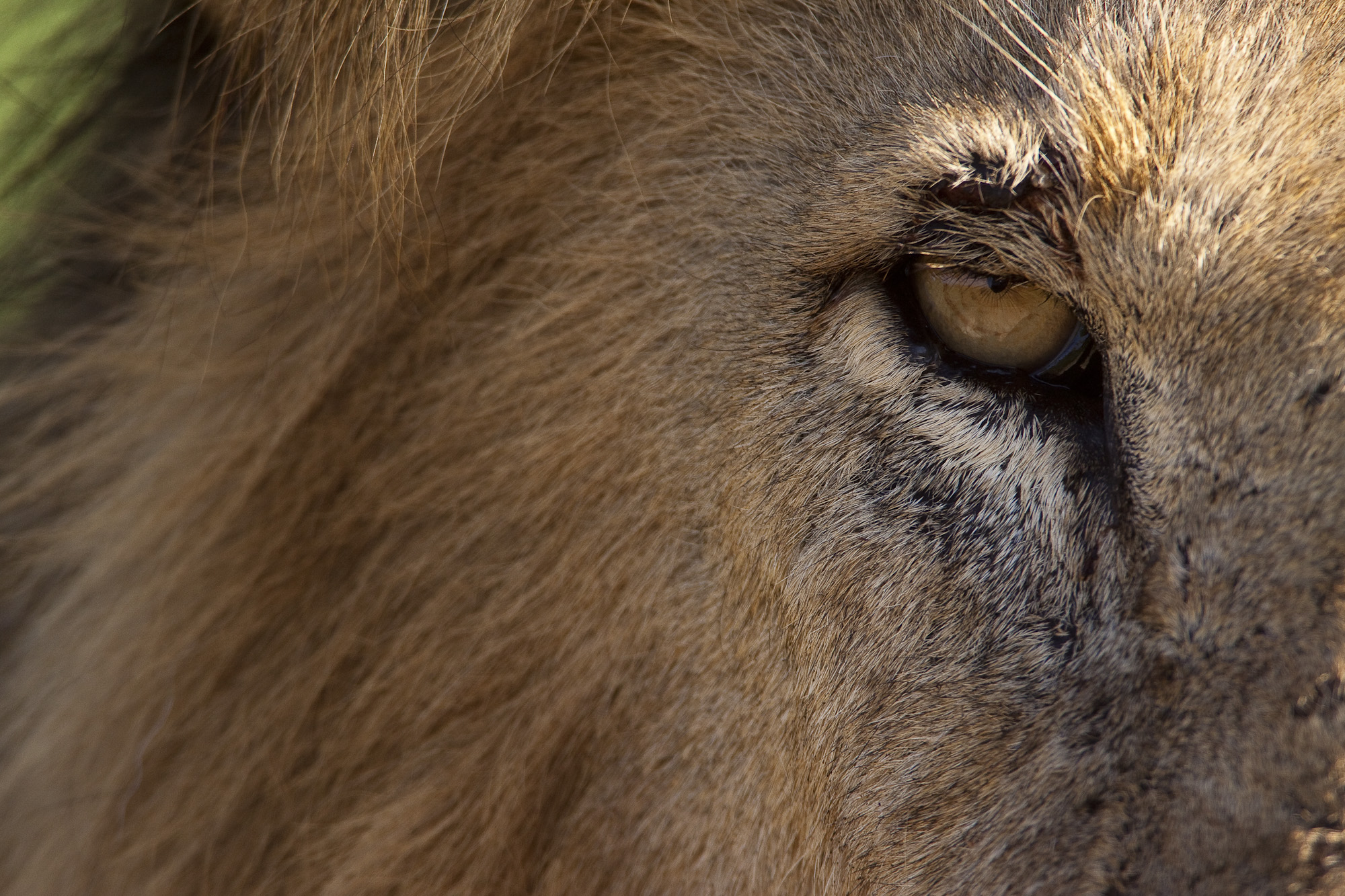
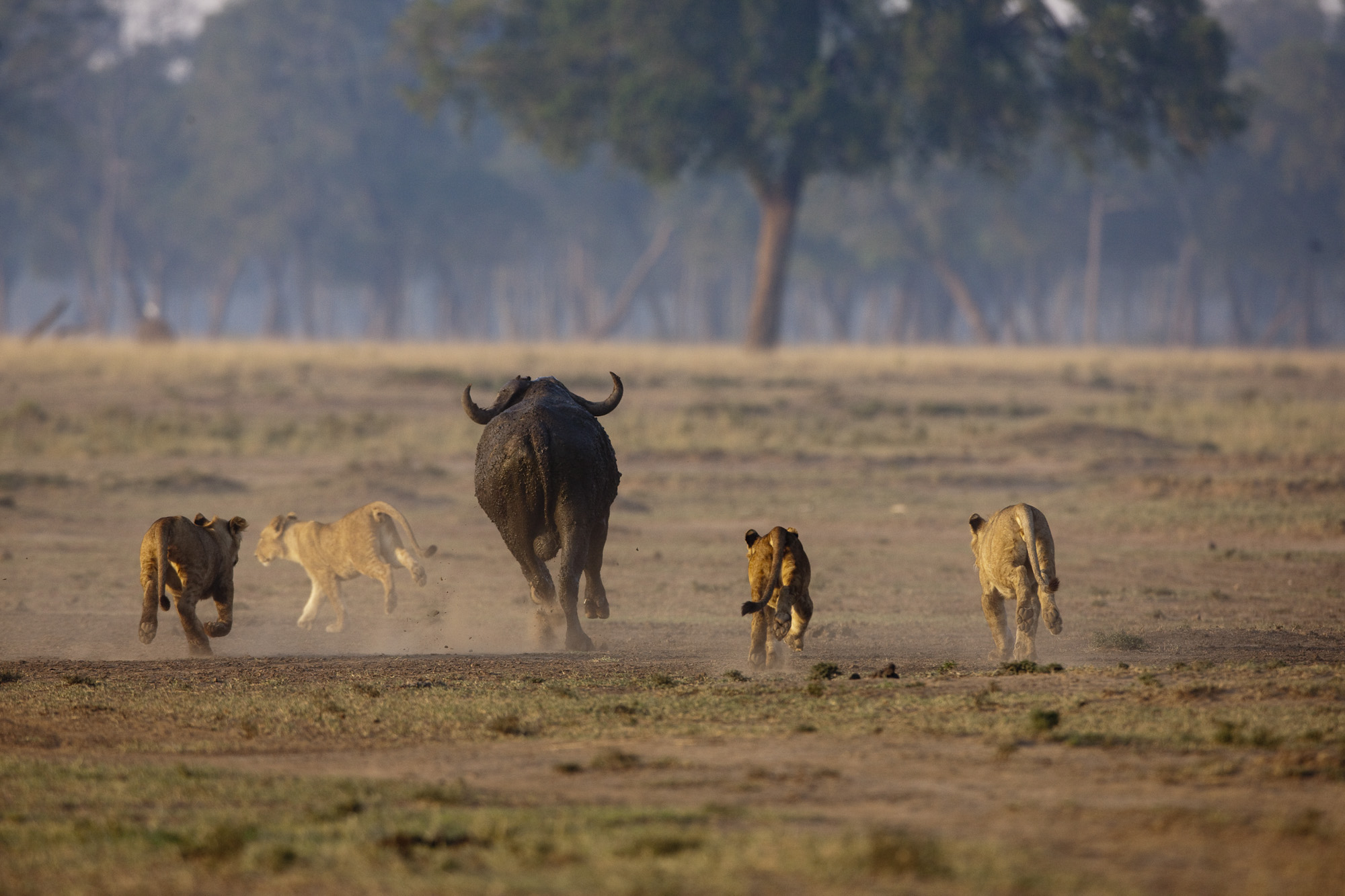
Leopard
As the lion eptiomises power and majesty, so the leopard stands for grace and cunning. Often regarded as a shy, nocturnal animal, sightings of leopard in the Maasai Mara can occur even in the middle of the day and last for several minutes.
Leopards prefer wooded savannahs and rocky outcrops, and in the Maasai Mara they are most likely to be encountered resting in a tree. They have remarkable vision, exceptional hearing and a good sense of smell. A skilled climber, they often drop on their unsuspecting prey from above, followied by a strike with claws extended then a bite to the next or back of the head while paws embrace the body.
They prey on many mammal species particularly antelopes, and have a particular liking for baboons - often we hear baboons barking suddenly in the middle of the night. They have incredible strength and are able to carry a kill high into a tree to hide it from other predators. Adult leopards lead a solitary existence, only coming together during periods of mating.
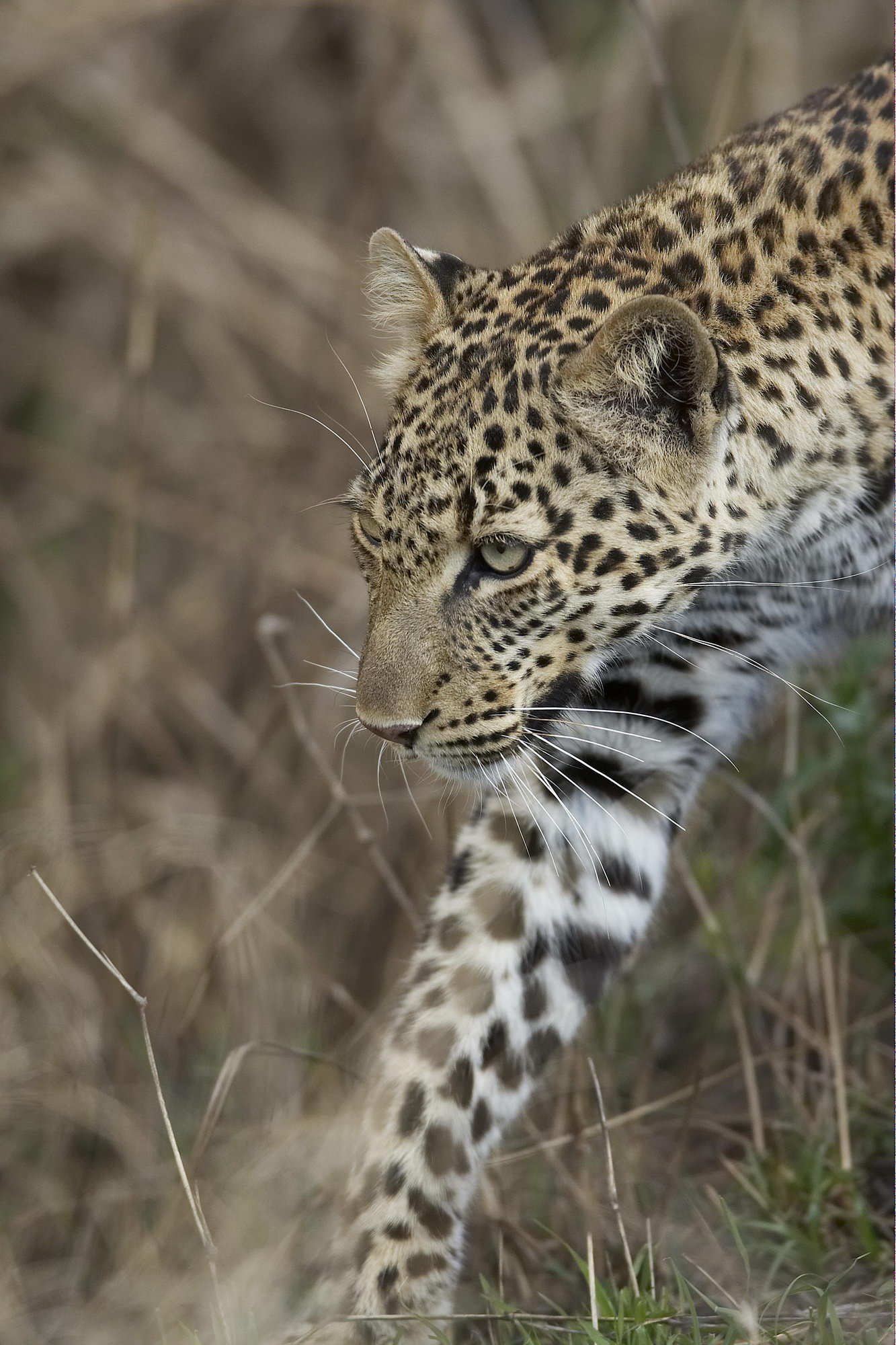
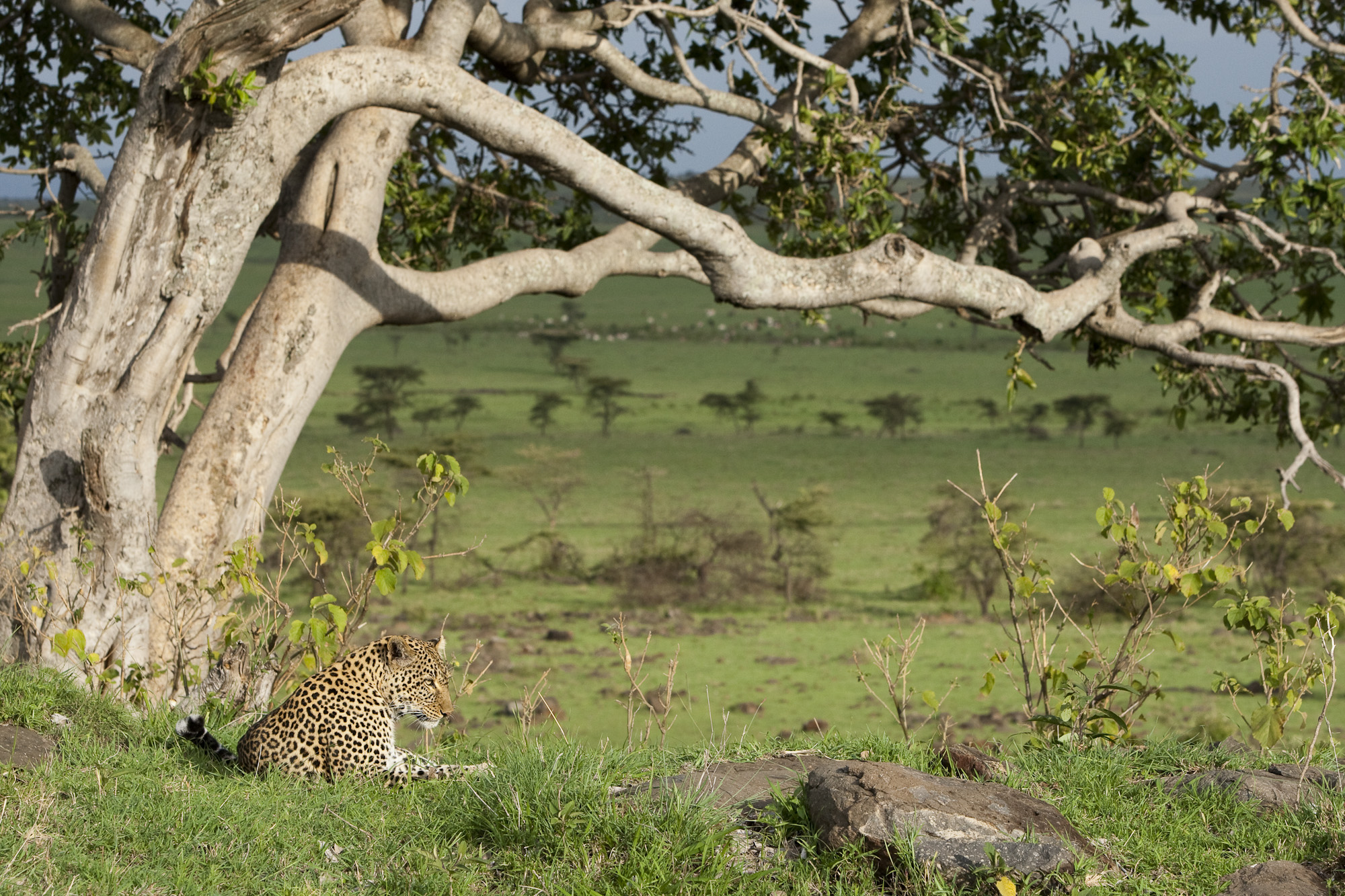
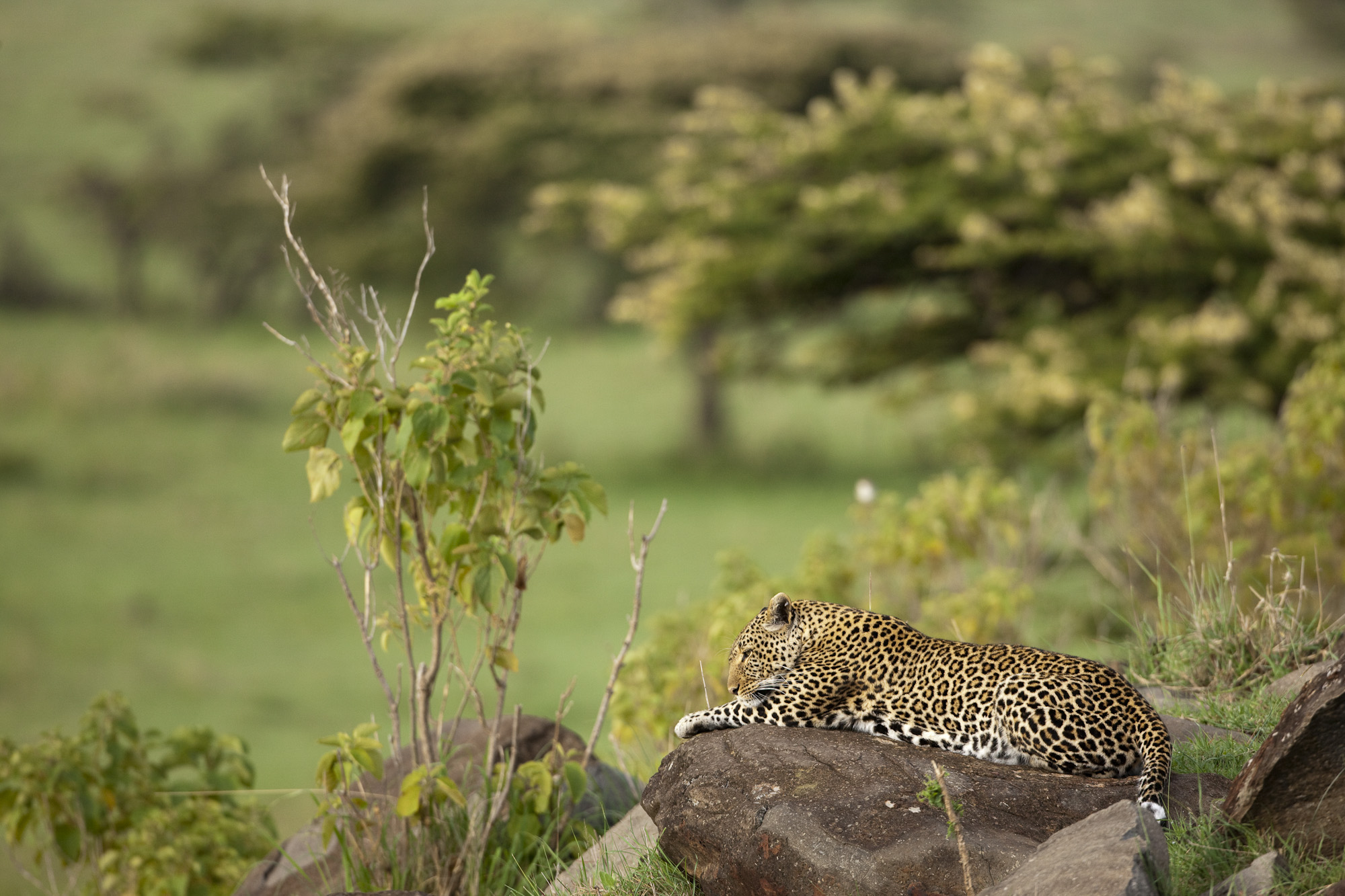

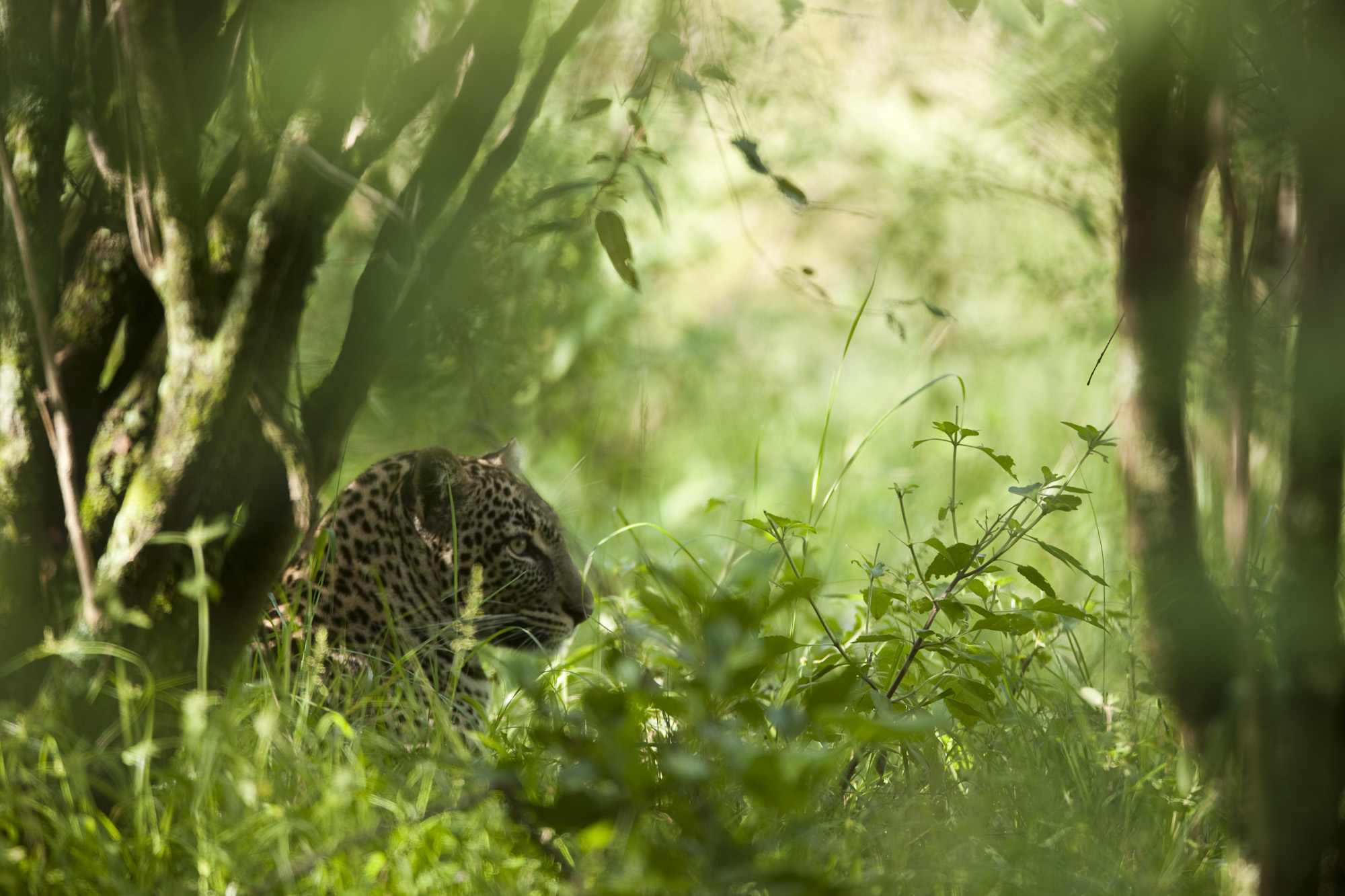
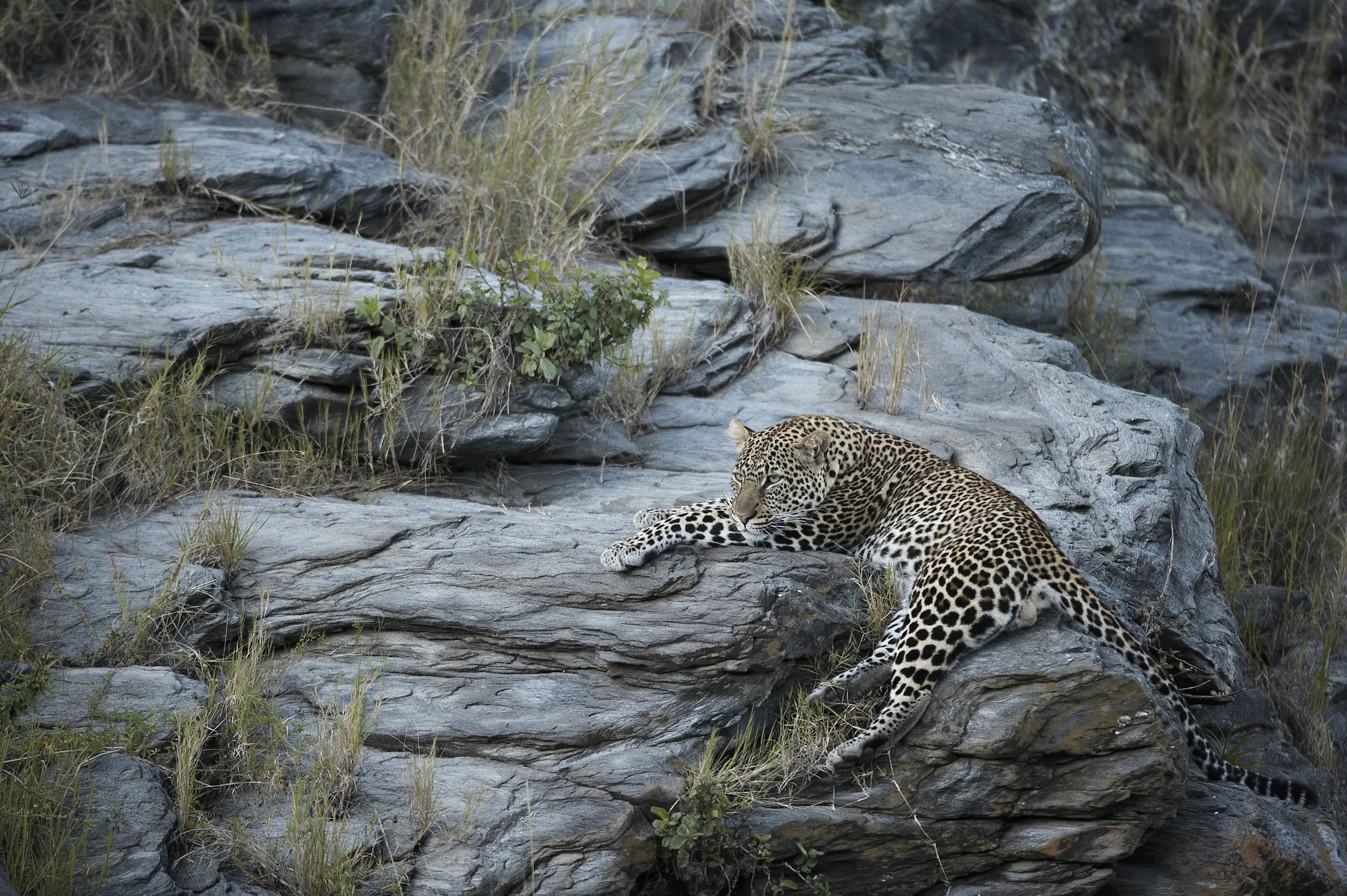
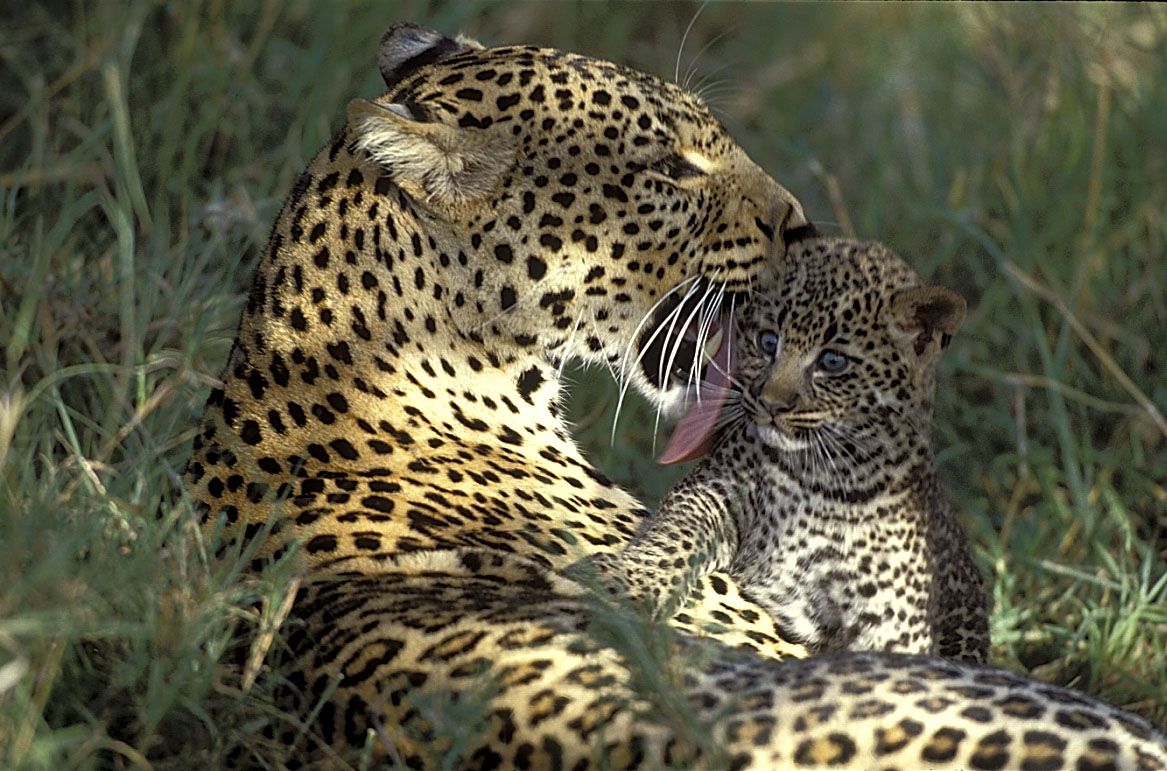
Cheetah
Although not as muscular as the leopard, the cheetah is built for sheer speed and is the world's fastest land mammal and has been timed at 110 kilometres per hour. The Maasai Mara is one of the best places in the world to see a cheetah, and they often seek a vantge point on a fallen tree, termite mound or even car bonnet, to look out across the savannah for their next prey.
The cheetah's method of hunting is peculiar to the species as it is built for speed and hunts by stalking close to its prey and then racing after it, bringing it down before seizing it by the throat and suffocating it. Being a sprinter it cannot maintain great pace for long, and if it has not caught its victim within 100 metres or so it will give up the chase.
When the hunt is over, the cheetah lies with heavy flanks for up to half an hour before recovering to feed. This makes it very vulnerable to hyaenas, jackals and even vultures who are keen to snatch the kill. Cheetahs have a very precarious existence in the Mara and are often chased away from a kill, we therefore urge visitors not to approach them when they are feeding and especially not when they are hunting.
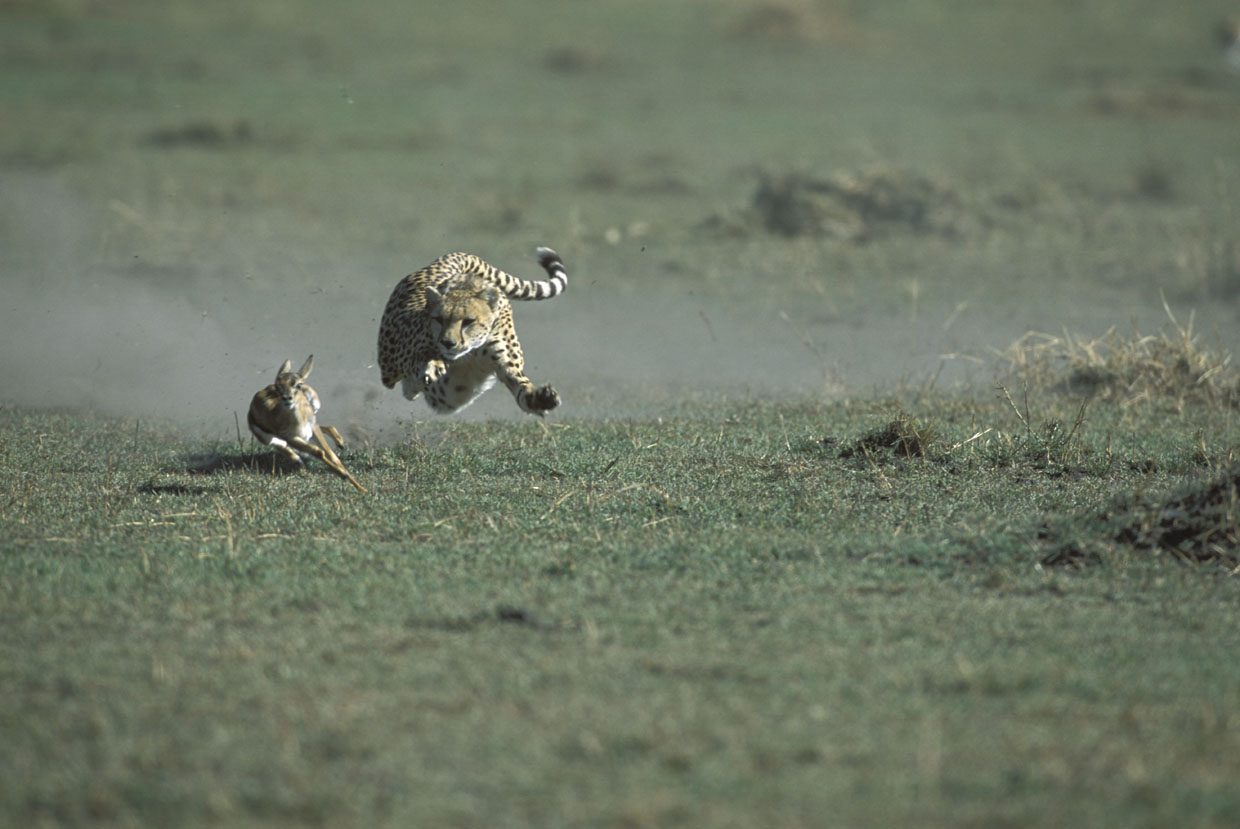
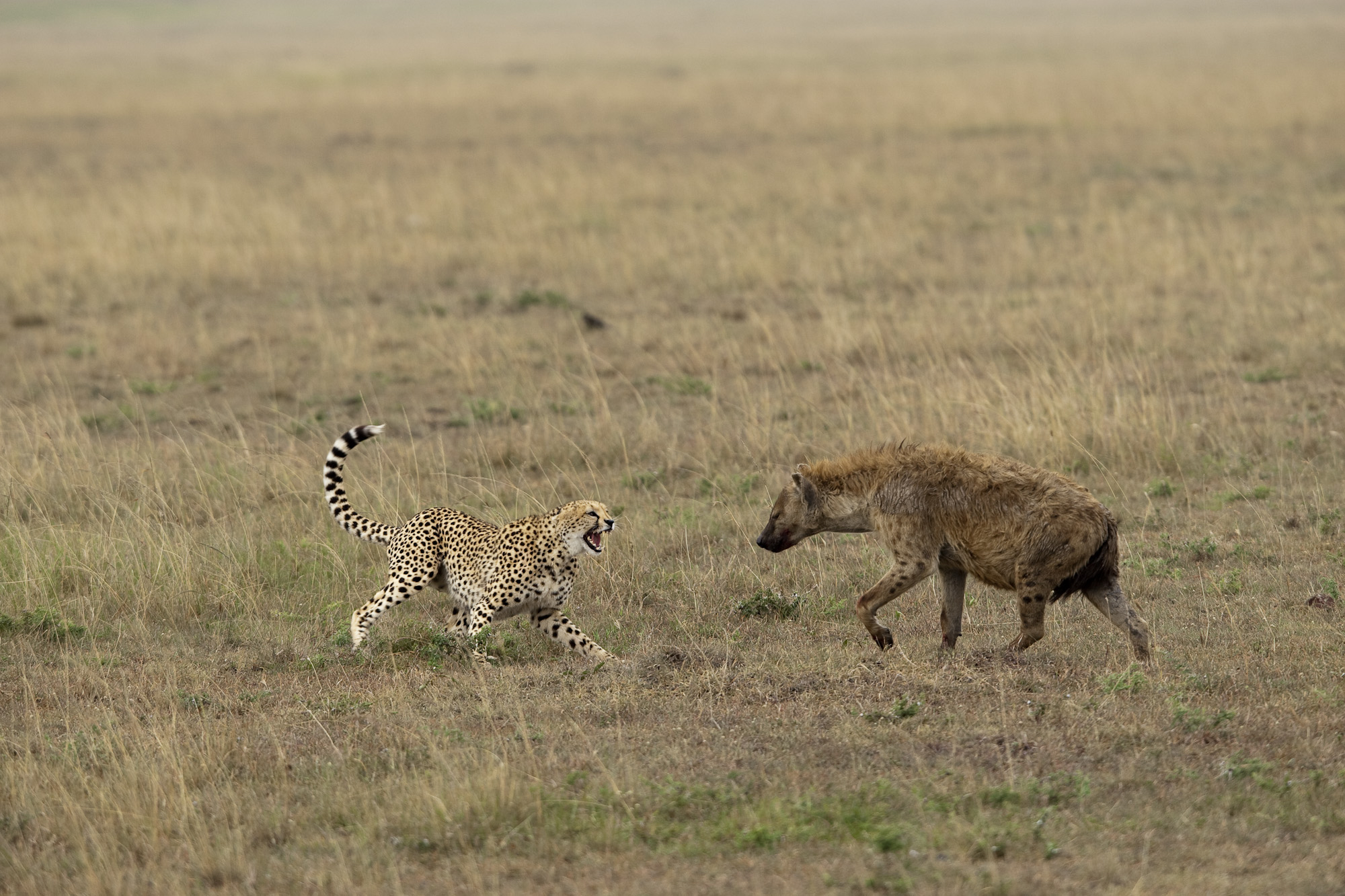
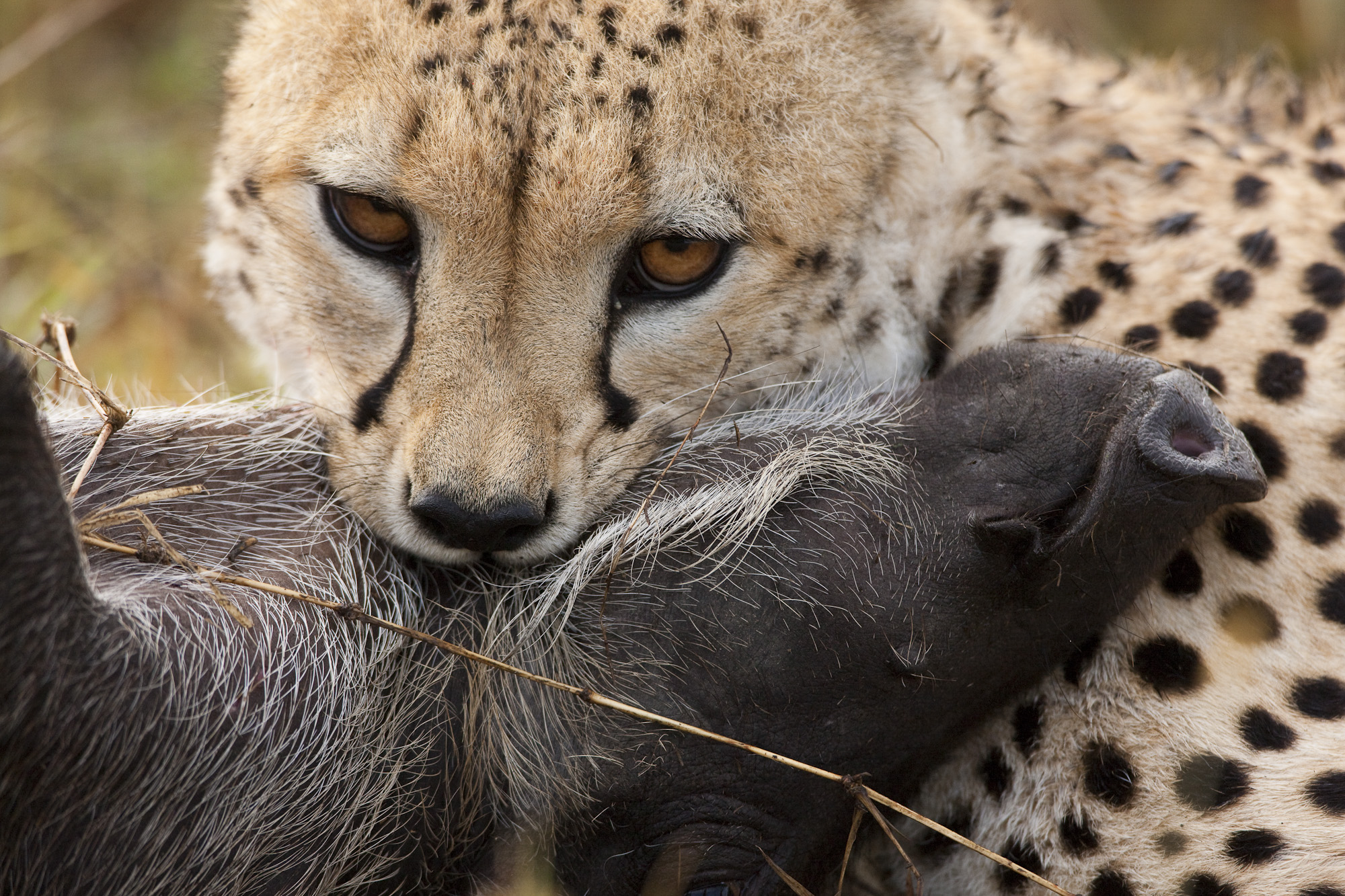
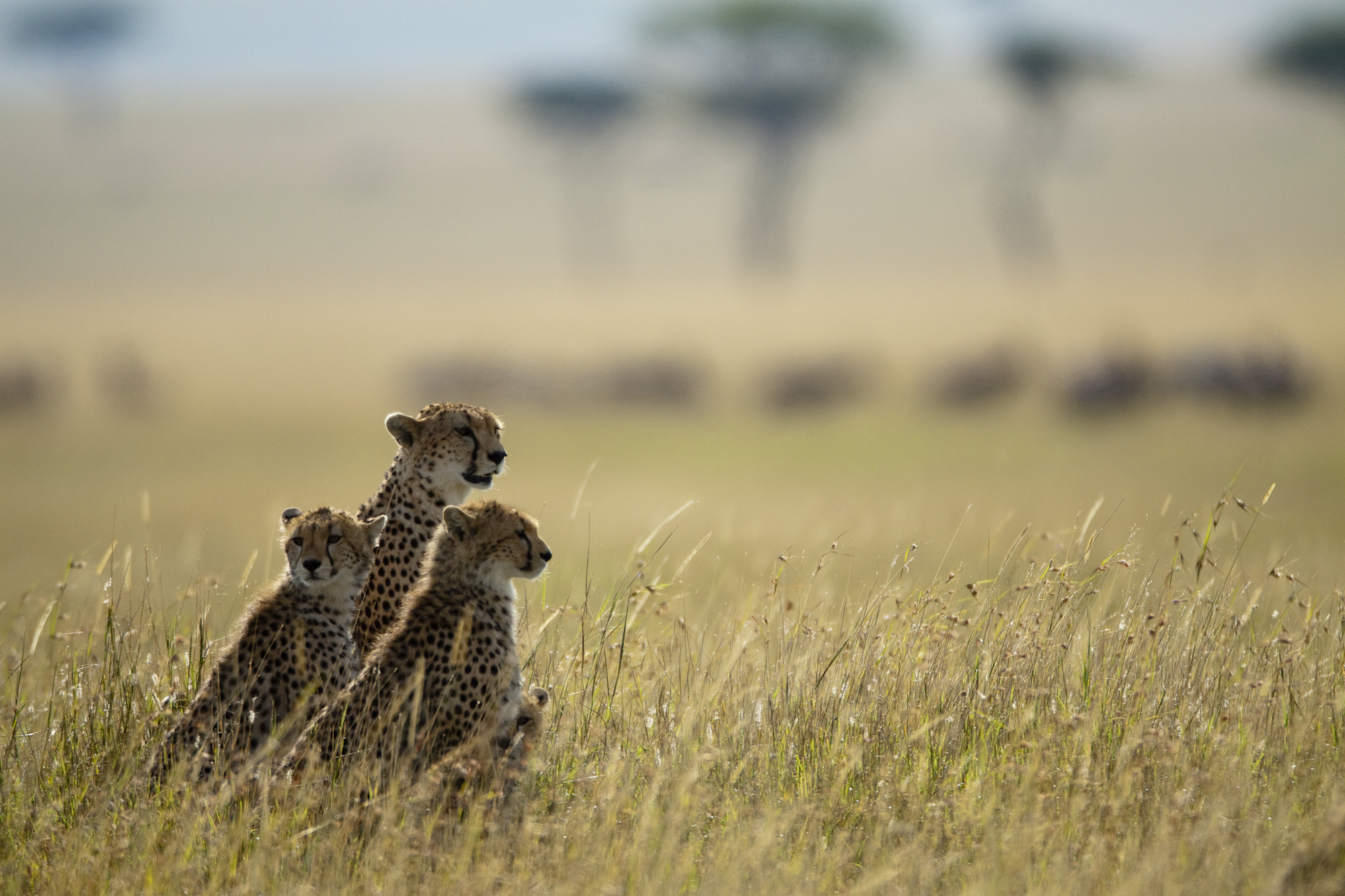
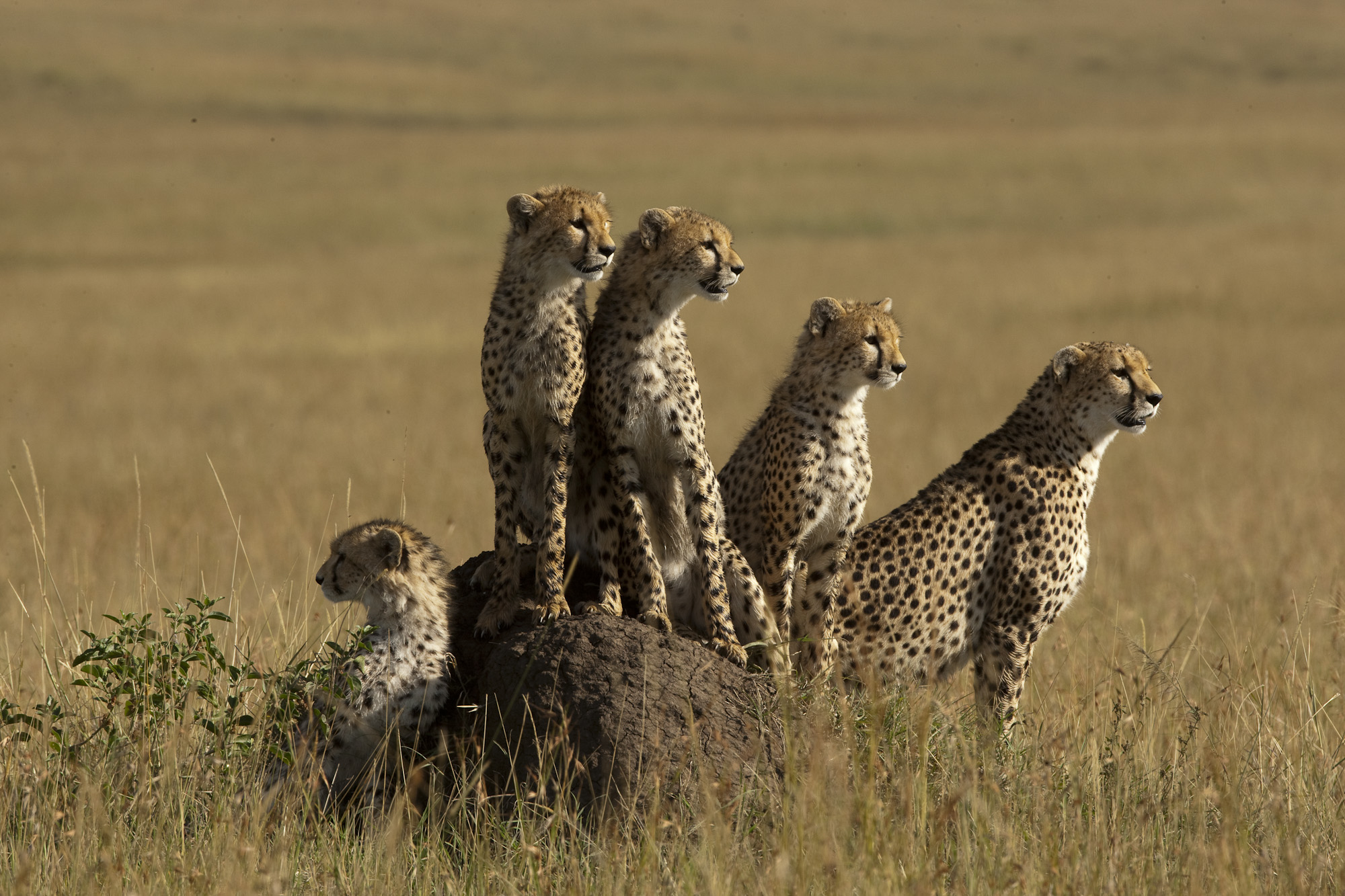


BIG CATS FAQ
What should I do if a cheetah hops on top of my vehicle?
Stop the engine and do not move the vehicle until the cheetah gets off. Keep quiet and do not agitate the animal. What kind of behavior is classified as animal harassment?Shouting, clapping, cheering, standing on top of your car roof, getting out of vehicle, driving up to animals closer than 25 meters, chasing/following animals, and driving fast near animals are all classified as animal harassment.
What happens when we harass animals?
When vehicles or humans harass animals their normal behavior is interfered with (ie: hunting, mating, nursing, crossing, etc). Cheetahs are especially vulnerable to such interference.
What can I do when I find an orphaned baby animal?
Most mothers return to their young so it is best not interfere with them. You must not pick them up as handling of babies will transfer your human scent which can cause the mother to reject her young. If you are certain that the mother has not returned to the baby by dawn, inform the rangers of the animal’s location.
When do you see baby animals in the Mara Triangle?
All year-around breeders include: lions, leopard, cheetah, hyena, elephant (peak March-April),rhino, impala, buffalo, baboon, vervet monkey, Seasonal breeders include: bat-eared fox (July, Aug), jackal (July, Aug), topi (Oct), warthog (Oct), wildebeest (Feb-in Serengeti), eland (Sept, Oct).
What can I do when we find an injured or dead animal?
Only report the whereabouts of the injured animal to the rangers when the injury is suspected to be human induced (snares, spears, arrows, etc). The same applies to dead animals – unless it is a lion, cheetah, rhino, leopard or elephant.

